It’s the start of 2022 and many companies are planning their comms for the year ahead. An important consideration before diving into the content calendars, events, posts and press releases is how to approach this strategy with an inclusive hat on.
There’s plenty of handy calendars and useful tips on where to find inspiration on LinkedIn, but when it comes to planning what your organisation is going to do for Black History Month or Pride or International Women’s Day it is crucial to consider first:
- Why – why your organisation is running this campaign and if it aligns with your current culture and products
- How – your team’s capacity, budget and how to avoid creating unmanageable workloads or added expectations for people with lived experience
- Who – the audience you’re trying to speak to so you can spend time getting to grips with the issues that affect those communities
- Where – the channels your organisation will use to reach them and if there are any ethical considerations about those channels you might want to consider first
Before getting anywhere close to the “what” – the actual post, press release, blog, report, video, the strategic partnerships and the collaborations…
1. …Start with the “why”:
Before creating a post for Black History Month, or LGBTQ+ History Month, you have to ask yourself why? Why is your organisation doing this? How does your diversity and inclusion strategy fit into your business strategy?
- Is it because your organisation wants to campaign for change and wants to share how they are working towards creating this change?
- Do you want to create an inclusive culture where the staff, customers and suppliers you work with feel seen, heard and represented?
- Is it to attract and retain more diverse talent to work for your business; apply to your venture capital or grant funding scheme or to take part in your educational course?
- Do you want to expand your membership to be more inclusive? Are you trying to build an online community? Do you want to reach a new audience and expand your customer base?
Once you understand the “why”, ask yourself whether the “why” aligns with your current internal diversity and inclusion policies and the products and services you provide?
If not, then I would consider whether an external communication strategy focused on diversity and inclusion is appropriate for your business at this moment in time. Instead, maybe reinvest that money into working on making your own business and product more accessible and inclusive.
Public accountability and using your platforms to amplify a cause are both important. But don’t announce something if you don’t mean it. Without an ongoing commitment and strategy to change, a public declaration of support can look like hollow marketing. This is something the Financial Times reported on following the death of George Floyd, commitments to diversity and racial justice proving to be much easier to make than to keep.
However, if the reason “why” you are running these campaigns aligns with your business strategy, you can now move on to the “how” – the team, capacity for delivery and the budget allocated for this project.
2. “How” – capacity, time commitment and avoiding creating unnecessary workloads for those with lived experience
Avoiding unmanageable workloads: It’s crucial to know what you’re working with in terms of capacity and time commitment, so you can set attainable and deliverable goals and not create unmanageable workloads for yourself or your team.
Is it one hour a week or its 20 hours? Is it the founder of a new startup juggling lots of different responsibilities or is it a communications team of 3? Is your comms strategy integral to your impact or is it “nice-to-have”?
Asking this first will help you what is possible within the parameters of your team and budget and if there isn’t capacity, it can also help you build a business case to allocate funding for an external consultant, agency or strategic partner.
Be careful to not create additional workloads for those with lived experience: Often diversity and inclusion work is taken on (either voluntarily or because they may feel an expectation to) by the people who care about the topic deeply, which is often people with lived experience of that issue.
However, placing the expectation on marginalised groups to do this work is asking for a lot of emotional energy around a potentially sensitive topic. No one should not be expected to take on unpaid labour to educate the workforce. D&I planning is work and it can be especially exhausting work, even if someone is excited and willing to do it.
“In the wake of Black Lives Matter, companies across the globe have put new emphasis on diversity – adding people of colour to their ranks, implementing bias training and attempting to lift marginalised voices. It’s welcome news, but also a double-edged sword for people of colour (POC) and black, indigenous and people of colour (BIPOC), as employers disproportionately lean on them to come up with initiatives, join committees and help formulate diversity game plans” – The BBC
If it is part of someone’s day-to-day role it’s important is to provide the appropriate amount of resources and time for the people running these campaigns, while at the same time striving to avoid the creation of extra work and expectations for those with lived experiences of discrimination.
This is also why allyship is SO important, as it helps remove that pressure and utilises the resources, privileges and platforms of allies who want to help make a difference.
“Allyship: a lifelong process of building relationships based on trust, consistency, and accountability with marginalised individuals and/or groups of people.” – Forbes
If your team doesn’t have the capacity, consider hiring a D&I consultant to help or working with grassroots organisations.
Once you’ve established “how” this campaign will be delivered, you can begin to set your communication goals with a good understanding of what is possible.
3. “Who” is your audience?
Now you have the “why” and “how” sorted, you can begin to think about “who you are speaking to” and craft your message and content with this audience in mind.
For example:
- If your why was “attract a more diverse candidate pool” – are you looking to reach Black professionals or neurologically diverse talent? When you say “more diverse”, more diverse compared to what? Most likely your current staff makeup, therefore based on your data you’ll know which groups you’re currently not servicing or reaching.
- To advocate for change and to educate decision-makers on diversity and inclusion issues – your audience might be mid-level managers and HR teams across corporate, policy and charities.
- If your why is to “raise awareness of the negative impact on mental health created by unmanageable workloads to sell a new tech product that reduces workplace burnout” – your audience might be both c-suite or management at a start-up, as well as educating employees.
Your “who” will also inform which future organisations and individuals you may look to partner with on collaborative content and campaigns.
And also gives you guidance on where to focus your research and reading, so the team delivering the project understands the specific issues that may affect this audience.
4. “Where” should I post to have the biggest impact, with the resources available to me?
Finding the right platform, style of content and deciding how much budget to put behind each can be one of the most overwhelming parts of any communication strategy. But this should be a lot easier if you’ve established your why, how and who beforehand.
There are many many channels and platforms and it’s crucial to pick the ones that work for “why”. For example:
- LinkedIn – good for building a business to the business customer base, with useful practical business tips and inspirational business stories
- TikTok – a younger audience with authentic/ quirky original content or great for campaigning about a social cause
- Email – newsletters can be very effective at building an intimate community without relying on social media channels
- Podcasts – a great way to reach a specific audience of a particular show or build your own audience, but there’s some serious competition
If you’re a small team I would always advise that less is more when it comes to social. Pick one maybe two platforms, assign them a distinct purpose and do them well.
Ethical considerations about social media channels: Before you pick your channel you may want to consider if your brand wants to be associated with a particular platform.
In November 2021, Lush announced it would be “turning its back on Instagram, Facebook, TikTok and Snapchat, until the platforms take action to provide a safer environment for users” citing the “serious effects of social media” as the reason why it would no longer post across these channels. Instead Lush promised to “find new ways to connect”.
Indeed although sites like Twitter and Meta (formerly Facebook) condemn hate speech, it’s still incredibly easy to find.
“The world’s biggest social networks say racism isn’t welcome on their platforms, but a combination of poor enforcement and weak rules have allowed hate to flourish” – The Guardian.
Meanwhile, TikTok has been linked to the spread of Covid misinformation, with posts promoting lies and conspiracy theories about Covid-19 amassing millions of views while also being accessible to children as young as nine.
Raising awareness among brands about the spread of misinformation via social media, search engines and other platforms is something that the organisation NewsGuard is trying to tackle so that brands can avoid spending advertising budgets with untrustworthy domains.
/////
So after all of that strategic thinking and reflection, you’ll finally get to the “what” aka the actual content, reports, press releases, campaigns, tweets, LinkedIn posts, TikTok dances you’ll produce and who you might partner with to support and share your message.
This will be explored in PART 2, to give you a bit of time to take that all in.

